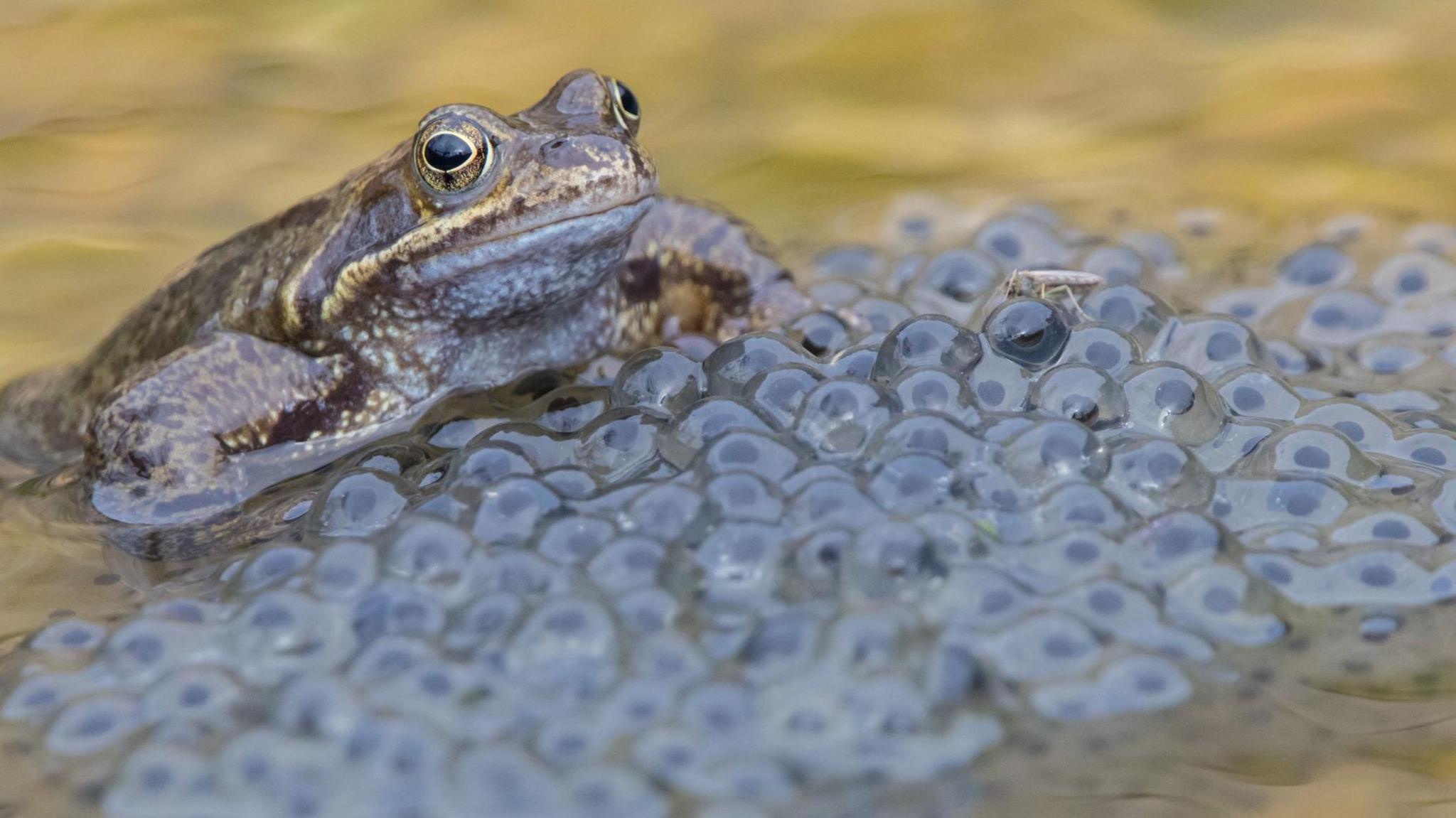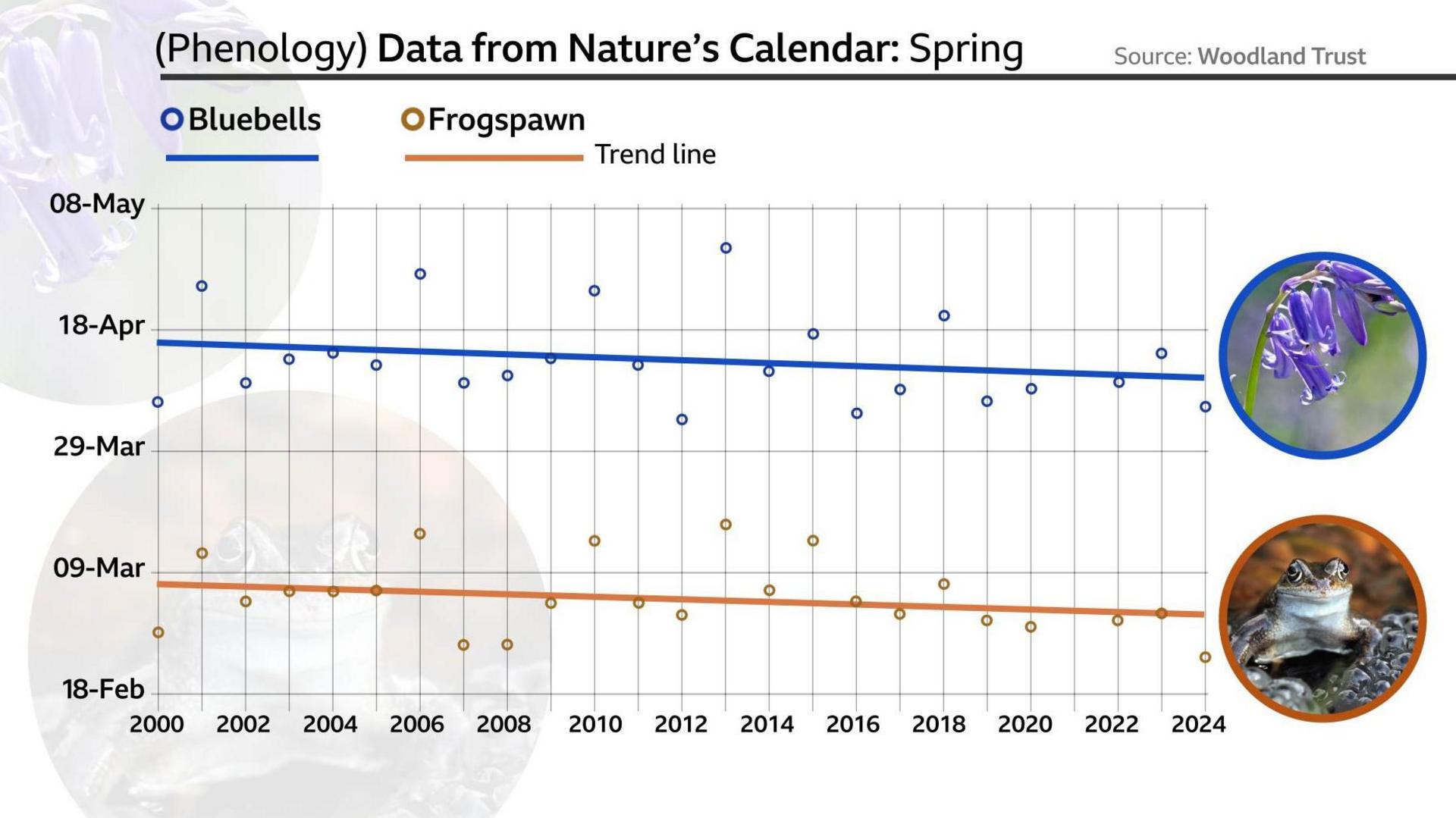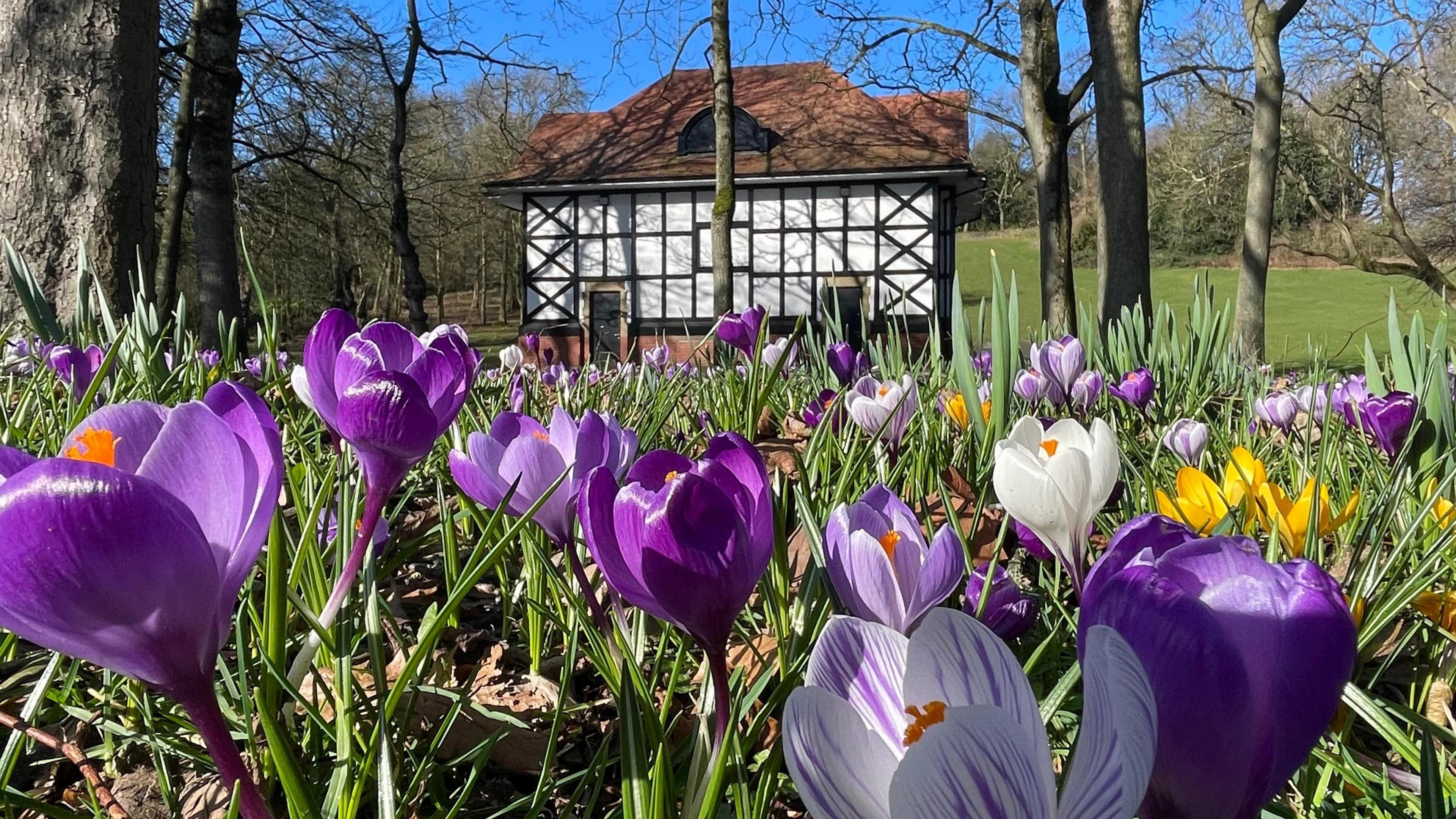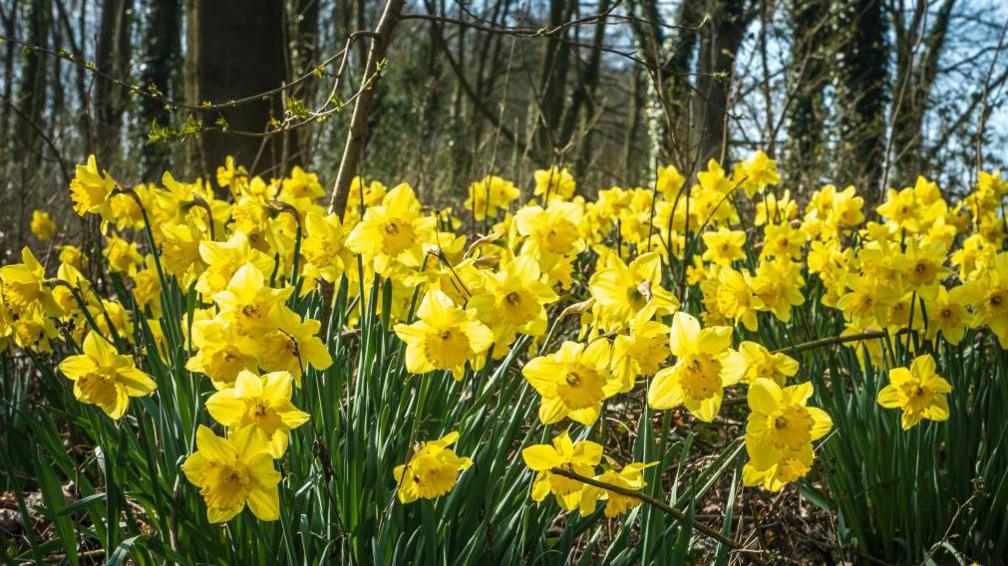Frogspawn sightings earliest on record

- Published
Data given to BBC Weather by Nature's Calendar, external - a citizen science project by the Woodland Trust - demonstrates that climate change is triggering natural events.
Since 2000 they have used public sightings of plants, animals and fungi to log the effects of weather and climate on nature.
Frogspawn sightings were the earliest on record in 2024 averaging 17 days before the benchmark or average date, according to Nature's Calendar.
Trends over time
Looking at when bluebells and frogspawn start to appear in the spring shows some clear trends over time.
Both are appearing earlier in April and March respectively,
This year, frogspawn has already been spotted in southern England with early indications that when all data is in, the average sightings will be on par with last.

Bluebells and frogspawn sightings have been trending earlier in the year
Changing phenology
While meteorological and astronomical seasons are known in advance (1 March and this year 20 March respectively) there is another measure we can use to track the course of nature: phenological.
This follows biological events and their response to weather and climate.
According to the Joint Nature Conservation Committee which advises the Government, key events that herald the start of spring are happening on average nine days earlier, external than a quarter of a century ago.
Alex Marshall from Nature's Calendar explained how important the data is to "see how nature is responding to our changing climate".

Spring 2025 has arrived
Changing seasons
Alex Marshall from Nature's Calendar said: "In general, spring is getting earlier due to higher temperatures, particularly at the start of the season.
"We've already had one record of common frog tadpoles from Cornwall on 16 February, the first tadpole record of the year.
"Warmer weather at the end of winter tricks species like the frog into thinking it's time to start reproducing.
"That becomes a problem, though, if some early March frosts occur which can kill the developing tadpoles...one negative impact of them coming out a bit early."
- Published16 January
Extreme weather has consequences
Phenology from other seasons, such as autumn, is more complicated and may be because of knock-on effects from spring.
However, from all the data gathered by Nature's Calendar, there are clear trends to changing timescales in our phenology in spring and autumn.
And those changes are in part a consequence of warmer seasons.
Met Office analysis suggests for every 1C increase in October temperature, the date at which trees lose all their leaves is delayed by about two or three days.
And climate change is leading to more extreme weather which is also causing confusion amongst some species.
"It's the unpredictability which is the biggest threat at the moment," says Ms Marshall.
With each tree, flower, fruit or animal species reacting slightly differently to our changing climate, there may become a mismatch of events.
This could lead to a disruption in the food chain to some of our species and put them under pressure in the future.
- Published1 March

- Published14 November 2024
